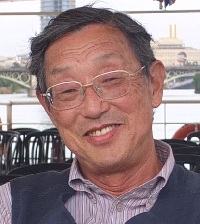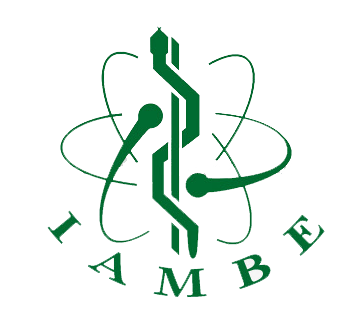
Akira Kamiya was born in Tokyo, Japan, in 1938. He graduated Medical School, University of Tokyo in 1964 (M.D.) and then Graduate School of Medicine, University of Tokyo in 1969 (Ph.D.). Dr. A. Kamiya had been an assistant and associate professor with Institute of Biomaterials and Bioengineering, Tokyo Medical Dental University from 1969 to 1980. From 1976 to 1978, he spent his sabbatical with Department of Physiology in Gothenburg University in Sweden as a guest researcher. In 1980, he moved to Research Institute of Applied Electricity, Hokkaido University and served as a professor of Division of Medical Transducer for about ten years. In 1989, he moved to Institute of Medical Electronics in Faculty of Medicine, University of Tokyo as a professor of the division of Basic Medicine and in 1997, was shifted to Department of Biomedical Engineering, Graduate School of Medicine, University of Tokyo, serving as a professor with the section of System Physiology until 1999. After retiring from University of Tokyo, he had been a professor with Research Institute for General Sciences, Nihon University, from 1999 to 2007, and a professor with Yokohama College of Pharmacology, from 2007 to 2013.
Dr. Kamiya has devoted himself for the studies on cardiovascular physiology and related molecular biology from the viewpoint of biomedical engineering and biomechanics. At first, he was interested in the functions of microcirculation, e.g., substance exchange across capillary wall. He proposed a theoretical model for transcapillary permeability of macromolecules, in a paper published in 1978 with Dr. B. Rippe and Dr. B, Folkow during his sabbatical stay in Sweden. This model was later called as “the two pore theory”. He also had keen interest in the branching structure of blood vessels and its optimum models. With respect to the physiological mechanism inducing such an optimum structure, he and Dr. T. Togawa published a paper in 1980 titled “Adaptive regulation of wall shear stress to flow changes in the canine carotid artery” (Am. J. Physiology, 239, H14-H21). Since then, this paper has been cited in nearly 400 scientific papers issued from various international journals. Based on this experimental study and the finding that the adaptive response abolished after denudating the vascular endothelial cell (EC) layer just facing to blood flow, a number of international research groups involving physiologist, biologist and mechanical engineers started the in vitro studies about the effects of fluid shear stress on EC functions, by employing cultured ECs and flow loading devices as well as molecular biological techniques for the analyses of observed cellular responses. In his research group including Dr. J. Ando, Dr. K. Yamamoto and others also explored many in vitro studies in the field of cellular biomechanics from 1985 to 2013 using wild type and knockout mice, such as fluid shear stress effect on EC proliferation and migration, the sensing mechanism of the stress via the shear-specific calcium ion channel in EC membrane and so on.
In the research works on microcirculation, Dr. Kamiya and Dr. M. Shibata proposed a noble optimality model of capillary network with respect to the efficiency for oxygen transport from blood to tissue in skeletal muscles in 1990. The results of the analyses revealed a good agreement between the optimum structure and the actual arrangement during heavy physical exercise. Similar theoretical analyses concerning the oxygen transport efficiency have been further extended for the other components of the circulatory system, such as the res cell composition (hematocrit) in blood, the energetic of the cardiac ventricle, and the mechanism of ATP synthesis in mitochondria.
Regarding these studies, Dr. Kamiya published over 100 papers from international journals and a similar number of papers and review articles from Japanese journals. He received the best paper award of the year in 1972 from Japanese Society of Biomedical Engineering and Oka-Shoten Award from Japanese Society for Biorheology in 2007. He has been an honorable member of Japanese Society of Biomedical Engineering, of Japanese Society for Microcirculation and of Japanese Society for Biorheology. He has also been a Fellow, American Institute of Biomedical Engineering, since 1991.
